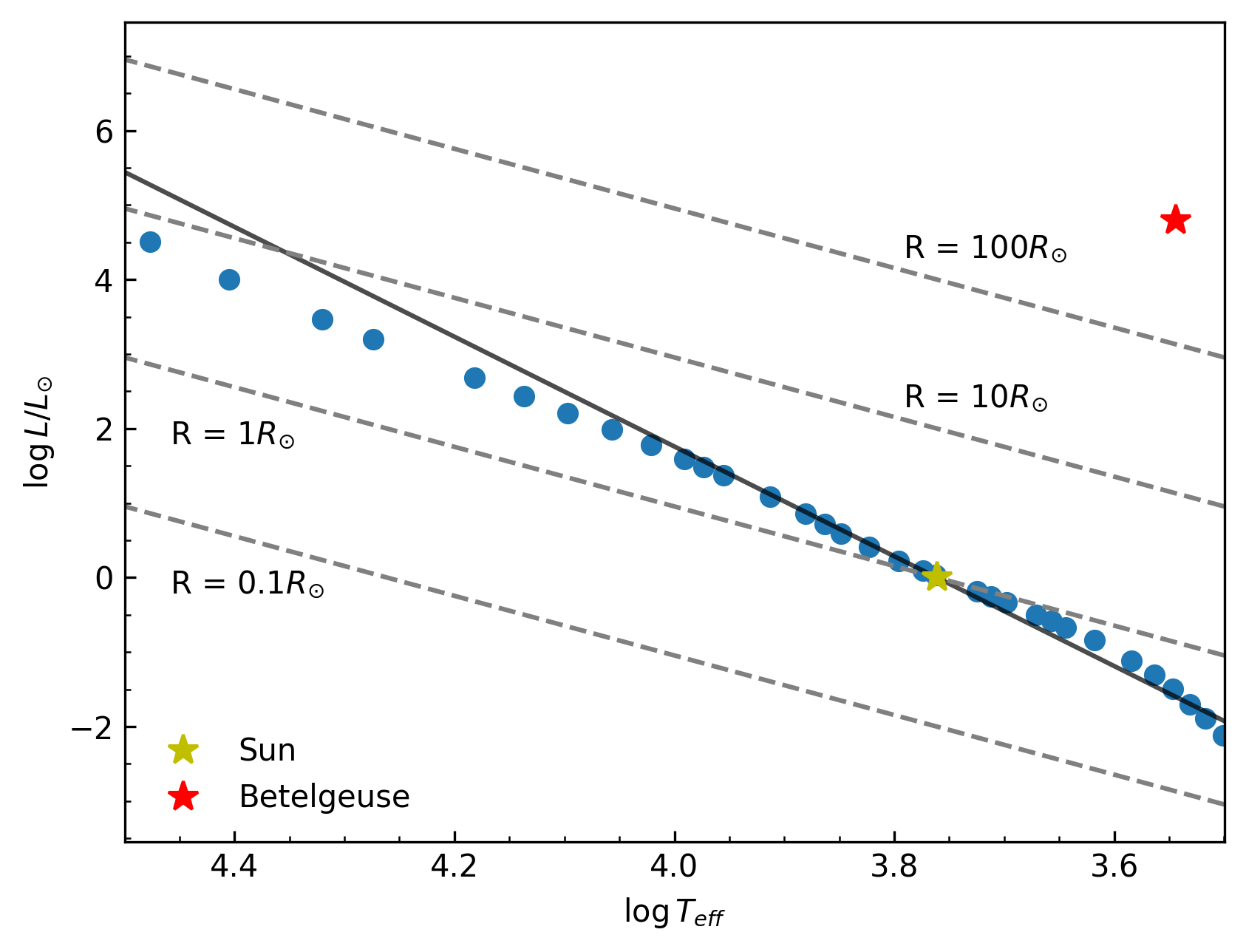This code generate a Hertzsprung-Rusell diagram from a stellar astrophysics homework based in the text An Introduction to Modern Astrophysics (2nd Edition) - Bradley W. Carroll & Dale A. Ostile.
The homework's taks were:
The main sequence present an aproximate mass-luminosity relation as
and a radius-mass relation as
.
- With the before relations you can graph the main sequence in an Hertzsprung-Rusell theoretical diagram (HRD). Your HRD should cover the range 3.5 - 4.5 for
and a appropiate range for
. Hint: Derivate first a expresion for
in
terms for stars in main sequences.
We now that the relation between the luminosity and the effective temperature for a star is:
where is the Stefan-Boltzmann constant and
is the star's radius.
if we divided with the Sun's values:
from the above relations we have that:
for main sequence:
here i used the effective temperature of sun equal to
- Draw a dashed line in constants stelar radius equal to
.
- Betelgeuse star has
and
. Show the position of this star on your HRD.
At the moment the resulting HRD is:
 Where the line represent the mathematical aproximation for stars on main sequence, the blue points are stars on main sequence from the G-appendix in An Introduction to Modern Astrophysics (2nd Edition) - Bradley W. Carroll & Dale A. Ostile and the dashed lines will be regions where stars will have these star's radius.
Where the line represent the mathematical aproximation for stars on main sequence, the blue points are stars on main sequence from the G-appendix in An Introduction to Modern Astrophysics (2nd Edition) - Bradley W. Carroll & Dale A. Ostile and the dashed lines will be regions where stars will have these star's radius.